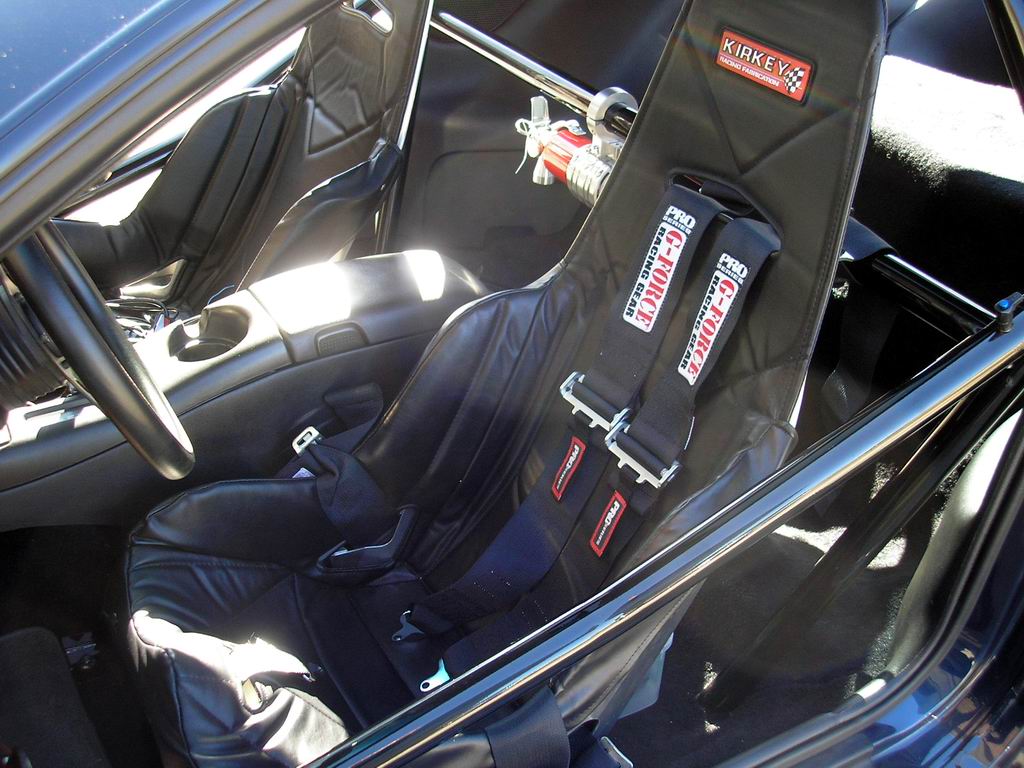All legitimately sanctioned racing requires participating drivers to buckle up.
In race cars, your seat belt is called a safety harness or racing harness, and their function and purpose requires little explanation. It’s hard to win races while injured, or worse, so in the interest of safety and future victory, we take a closer look at choosing a safety harness for your race car.
What Kind Do You Need?
Only your sanctioning body knows for sure, so always check with the rules. Each racing series will specify things like:
- Belt width
- Number of mounting points required
- How often they need updated
- Required rating
Ratings
The SFI Foundation certifies most motorsports safety equipment (with helmets being the notable exception).
Drag racers—and most any other drivers outside of stock car racing—will typically be looking for 16.1 SFI-rated harnesses. Stock car harnesses need to have a 16.5 SFI rating and will often feature a six- or seven-point harness instead of the more-common five-point harness.
Installation Types
Proper installation is critical. Your safety harness will cease to be safe, if not. It’s a good idea to know how you want to install your racing harness before purchasing one, so you know specifically what features you’ll need.
There are two common installation types—bolt-in and wraparound. Both typically require a roll cage or roll bar for proper installation. If being installed in a vehicle without a cage, reinforcement plates should be welded to the vehicle floor to give the harness a rigid mounting point. We typically recommend wraparound harnesses because proper mounting and installation won’t require altering your roll cage or roll bar.
The two common latch styles in racing safety harnesses are latch harnesses and camlock harnesses. For some types of competition, you won’t have a choice between a latch harness or a camlock buckle, because the rules will specify using one or the other. Some dirt tracks won’t allow camlocks; on the other hand, FIA events require the use of a camlock. Otherwise, the choice between a camlock or latch harness is mainly one of personal preference.
Latch harnesses are usually less expensive than camlock harnesses, and some users find them easier to unbuckle in a hurry. Those in the camlock camp tend to prefer the simplicity of the familiar seatbelt-like ends.
In a crash, the job of the harness is to help transfer and dissipate the energy of the car stopping suddenly. And with a properly rated and properly installed product, it will.
Which is good.
Because the more alive you are, the better chance you have of winning.


Please explain belt shelf life.why US has a time limit for belts and
europ has none.
Hey Warren, in addition to wear and tear from the rigors of a regular race season, materials can degrade even without use. Besides, safety tech evolves quickly, so putting a time window on current gear means that racers are always relatively close to the leading edge of safety equipment capabilities. And we’re not sure which sanctioning body you’re competing in, but the FIA, which oversees a lot of racing across the globe, stipulates that belts/safety harnesses have a five-year expiration term (as of this writing). So belt age isn’t solely a consideration for U.S. motorsports.